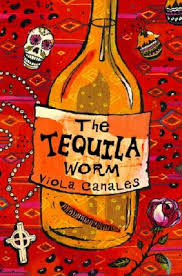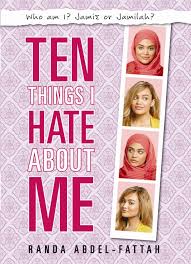 “But you have to use the love you still have for Rowie to create some things yourself. You fell in love. That’s brave. Find the courage it took to do that and use it to write something that makes other people feel something. It isn’t just about getting everyone’s attention, about shocking them and making them laugh. It’s about giving people a reason to think about something they’ve never thought about before, something only you can make people consider. It’s about moving people, honey. About telling your truth.”
“But you have to use the love you still have for Rowie to create some things yourself. You fell in love. That’s brave. Find the courage it took to do that and use it to write something that makes other people feel something. It isn’t just about getting everyone’s attention, about shocking them and making them laugh. It’s about giving people a reason to think about something they’ve never thought about before, something only you can make people consider. It’s about moving people, honey. About telling your truth.”
Meet Sister Mischief, a hip-hop group straight from Holyhill, composed of four of the baddest ladies around. There’s Esme, MC Ferocious, a Jewish lesbian who takes care of the verses; Marcy, DJ SheStorm, the toughest straight girl on the drums; Tess, the gorgeous vocalist and former Lutheran-supergirl…and Rowie. Rowie, the gal that Esme falls desperately in love with. Rowie, who shatters Esme’s heart when she decides to date a nice Indian boy instead.
In the midst of the heartbreak, there is an epic struggle with school administration. The principal has forbidden hip-hop and related clothing, and worse, refuses to allow Sister Mischief to run a queer student organization. The girls wanted a forum (in the center of all-white, all-straight Minnesota) to discuss issues of race and gender, but meet intense administrative resistance. When your love leaves you for someone she thinks her parents will approve of, and your school is as homogeneous as it can be, it’s hard to keep your chin up. With the help of her friends and her super-supportive single father (he’s the one who gave the amazing pep talk I chose as a quote), Esme sets about changing the world to make room for herself and her friends.
This book is full of biting wit, stellar wordplay, and the entire roster of Who’s Who in Hip-Hop History. Laura Goode plays with sounds and text, peppering the book with song lyrics and word combinations that beg to be read aloud. The structure is great, too; she intersperses the book with text messages, in the form of footnotes. While you’re reading, you’ll come to a footnote and then skip to read it at the bottom of the page. It’s so clever; it feels exactly like you are getting these texts in real life. You know how you’ll be reading and someone sends you a text, and you stop right away to check? This is the book version of it, and it’s really interesting and not at all distracting. Oh, and aside from mentioning (in a natural and not-pushy or pretentious way AT ALL) every incredible hip-hop artist in existence, there are also tons of quotes and references to queer writers and books, which is fantastic. This book reads like a thousand arrows pointing to other awesome works, so readers will find it rich with new things to read and listen to.
Structure aside, you’ll love Esme’s vulnerable, sassy narrative and the strong bond between the girls. Furthermore, teens will love that it takes them seriously: this is a story that completely affirms the intensity of emotion and passion of which young people are capable. My favorite part, though, is the post-race, post-gender tone of the book. While many people feel that being “post-race” involves never mentioning race or color, I feel differently. I think that when we ignore race and self-consciously refuse to discuss it at all, it is 1. inauthentic and denies reality and 2. furthers the gap between cultures, as it makes us reluctant to share and learn from each other because we feel it isn’t appropriate to ask. Race and sexual orientation are central to the text, and Goode handles it like a master; while including a diverse cast of characters, she avoids the trap of the “token lesbian/Jew/Indian/etc”. Also, huge props to the incredibly positive feminist message!
Hip-hop fans and anyone who’s ever had a broken heart or felt out of place will love the stuffin’ out of this awesome book!
Happy reading!
Author’s website: http://lauragoode.com/
Goode, Laura. Sister Mischief. Candlewick: Sommerville, MA, 2011. 367 pp. Ages 15 and up.
If you liked this book for the musical and literary references AND the queer content, then Hard Love is probably perfect for you, because it has all of those elements, plus is a super-award-winner! And, in the other direction, try Beauty Queens by Libba Bray. It has no hip-hop, and takes place on a remote island, rather than in a high school, but is full of the same wit and sass as Sister Mischief.
 “I wanted to play soccer on those beautiful playing fields. I wanted to get better at kicking with my head so I could go to college. I could get a good job and make enough money to buy a nice house for my parents and Lucy.
“I wanted to play soccer on those beautiful playing fields. I wanted to get better at kicking with my head so I could go to college. I could get a good job and make enough money to buy a nice house for my parents and Lucy.









